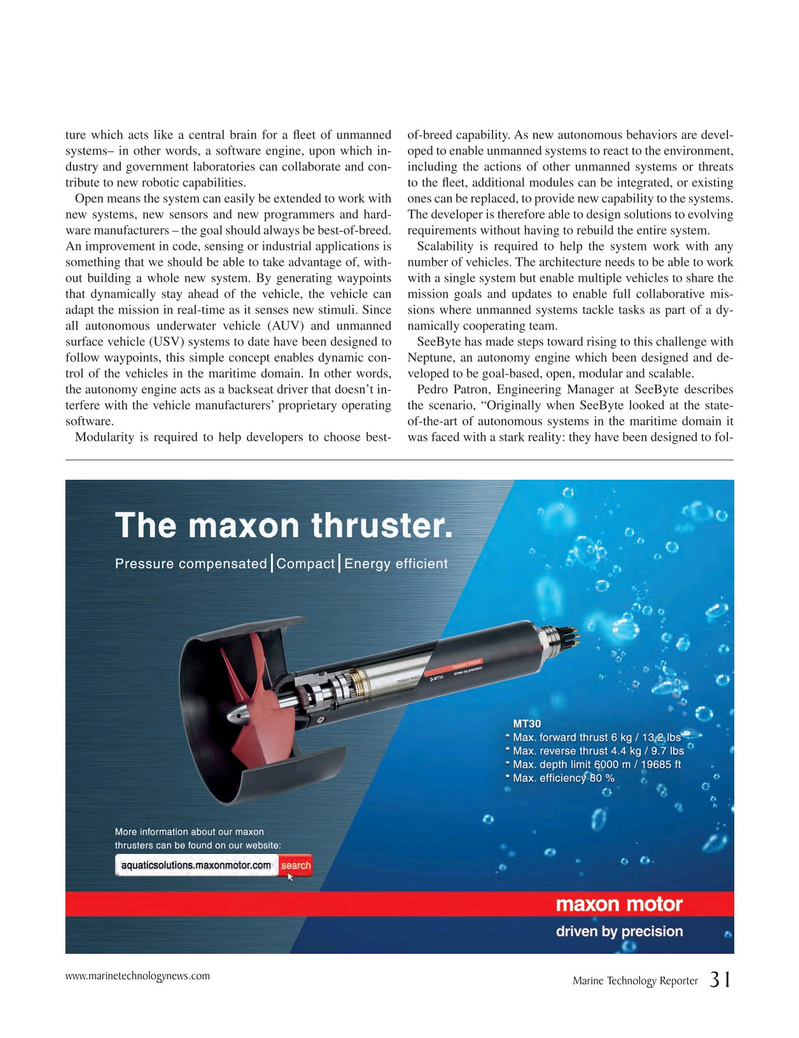
Page 31: of Marine Technology Magazine (October 2017)
AUV Operations
Read this page in Pdf, Flash or Html5 edition of October 2017 Marine Technology Magazine
ture which acts like a central brain for a ? eet of unmanned of-breed capability. As new autonomous behaviors are devel- systems– in other words, a software engine, upon which in- oped to enable unmanned systems to react to the environment, dustry and government laboratories can collaborate and con- including the actions of other unmanned systems or threats tribute to new robotic capabilities. to the ? eet, additional modules can be integrated, or existing
Open means the system can easily be extended to work with ones can be replaced, to provide new capability to the systems. new systems, new sensors and new programmers and hard- The developer is therefore able to design solutions to evolving ware manufacturers – the goal should always be best-of-breed. requirements without having to rebuild the entire system.
An improvement in code, sensing or industrial applications is Scalability is required to help the system work with any something that we should be able to take advantage of, with- number of vehicles. The architecture needs to be able to work out building a whole new system. By generating waypoints with a single system but enable multiple vehicles to share the that dynamically stay ahead of the vehicle, the vehicle can mission goals and updates to enable full collaborative mis- adapt the mission in real-time as it senses new stimuli. Since sions where unmanned systems tackle tasks as part of a dy- all autonomous underwater vehicle (AUV) and unmanned namically cooperating team.
surface vehicle (USV) systems to date have been designed to SeeByte has made steps toward rising to this challenge with follow waypoints, this simple concept enables dynamic con- Neptune, an autonomy engine which been designed and de- trol of the vehicles in the maritime domain. In other words, veloped to be goal-based, open, modular and scalable.
the autonomy engine acts as a backseat driver that doesn’t in- Pedro Patron, Engineering Manager at SeeByte describes terfere with the vehicle manufacturers’ proprietary operating the scenario, “Originally when SeeByte looked at the state- software. of-the-art of autonomous systems in the maritime domain it
Modularity is required to help developers to choose best- was faced with a stark reality: they have been designed to fol- www.marinetechnologynews.com
Marine Technology Reporter 31
MTR #8 (18-33).indd 31 MTR #8 (18-33).indd 31 9/28/2017 2:25:18 PM9/28/2017 2:25:18 PM

 30
30

 32
32
